Who Exactly Were Truman Capote's Swans?
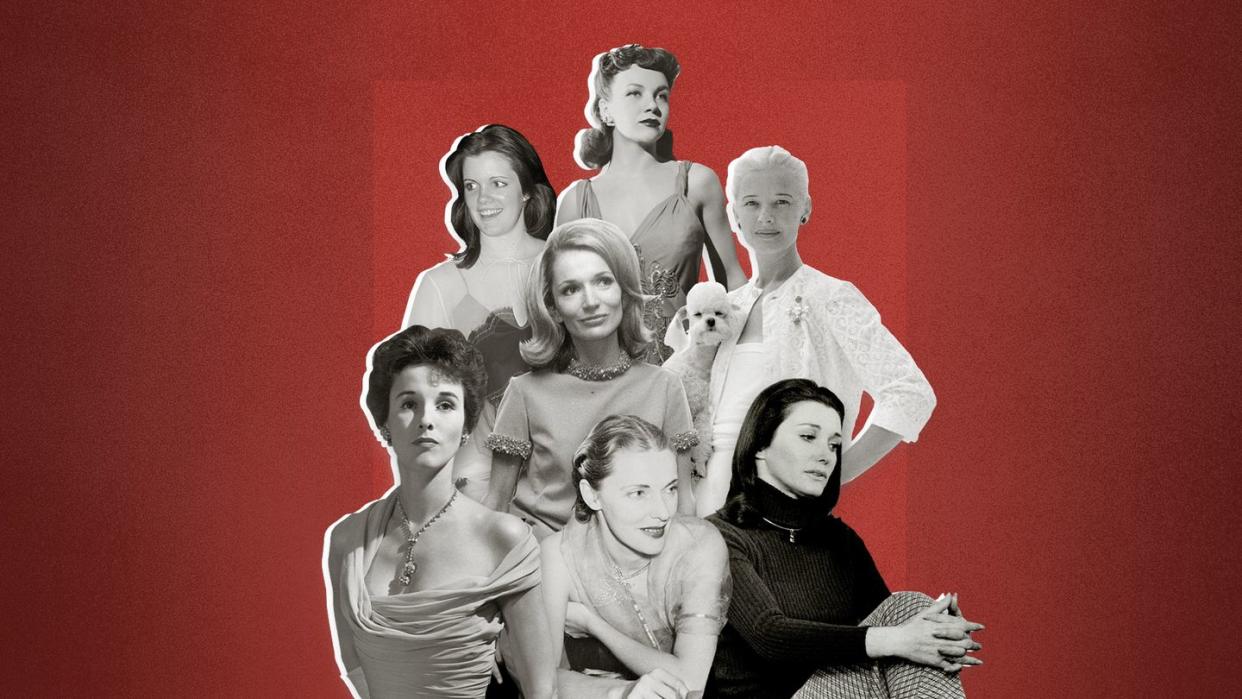
- Oops!Something went wrong.Please try again later.
- Oops!Something went wrong.Please try again later.
- Oops!Something went wrong.Please try again later.
- Oops!Something went wrong.Please try again later.
- Oops!Something went wrong.Please try again later.
- Oops!Something went wrong.Please try again later.
- Oops!Something went wrong.Please try again later.
- Oops!Something went wrong.Please try again later.
- Oops!Something went wrong.Please try again later.
"Hearst Magazines and Yahoo may earn commission or revenue on some items through these links."
"To be one of Truman's Swans," Laurence Leamer wrote in his 2021 book Capote's Women, "it wasn't enough that a woman be elegant, beautiful, and rich. She had to be amusing." Those women who qualified as such—at least those who became muses of Truman Capote—included Babe Paley (his favorite), Lee Radziwill, Slim Keith, Ann Woodward, C.Z. Guest, and Gloria. Guinness, Marella Agnelli, and Pamela Harriman.
These women, though varied in pedigree, style, and attitude, had a few common threads. First, they were each very rich, dames of high society, and members of the international set. They were frequently on the international best-dressed list and appeared on magazine covers (C.Z. Guest graced the cover of Town & Country's November 1957 issue; Lee Radziwill was the cover of the July 1963 issue). Some may argue that they were the original influencers who set the tone of #oldmoneyaesthetic that's still popular today. Ladies who lunch? They were the foremothers of it.
Capote—the famed novelist, journalist, and raconteur—was their second common thread. Standing at 5-foot-3 inches, Capote made up for his sleight build with a sharp tongue and a flamboyant way of expressing himself. He was also teetered on literary genius. Many of his works have been praised as literary classics including Breakfast at Tiffany's and the true-crime classic In Cold Blood.
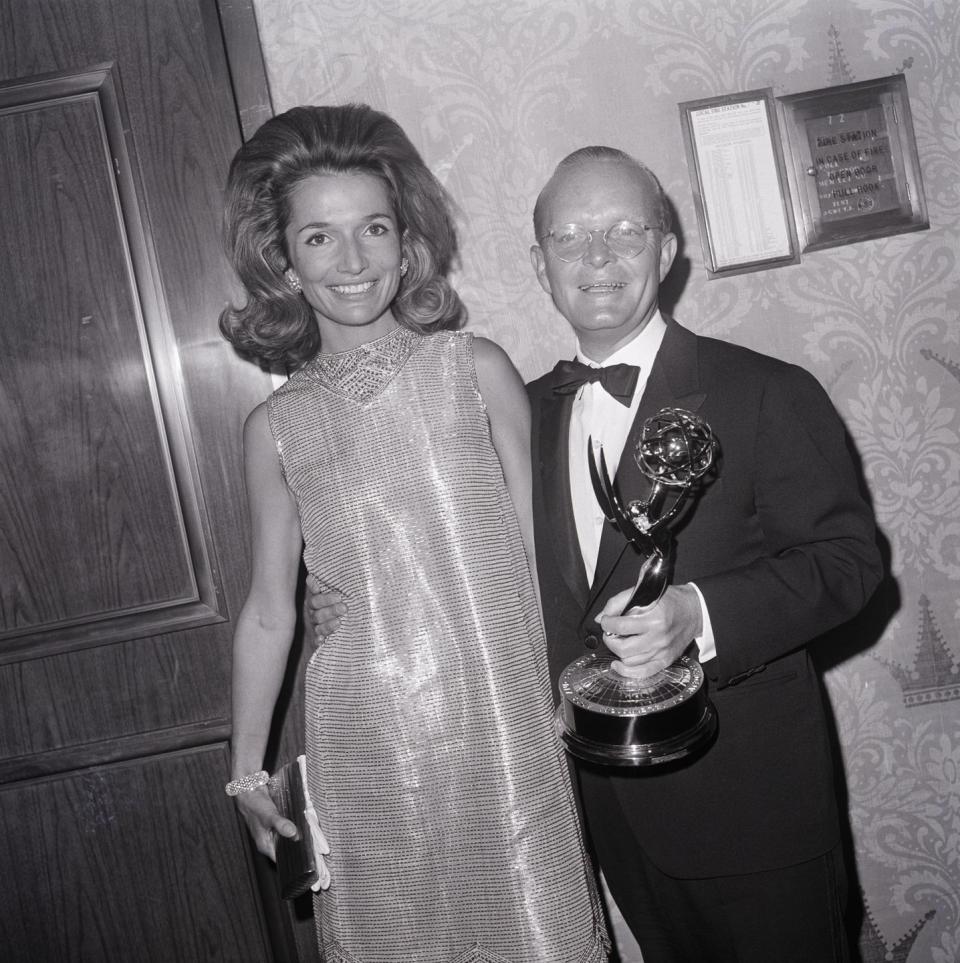
Capote served as a trusted confidant to each woman, accompanying them on their trips around the world and soaking in their secrets. For many, he was a sort of pet. That is, until Capote published "La Côte Basque 1965," an excerpt of his said-to-be-forthcoming novel Answered Prayers, in Esquire in November 1975. The piece exposed some of the scandalous secrets that Capote's Swans shared with him in confidence: substance abuse, sexual assault, a murder cover-up, and infidelity. In return, each iced him out from their high-society circles, excluding him from a world he was obsessed with.
Some of these women have leading roles in Feud, while others don't appear at all. Either way, learn more about Capote's legendary Swans below.
[table-of-contents] stripped
Babe Paley
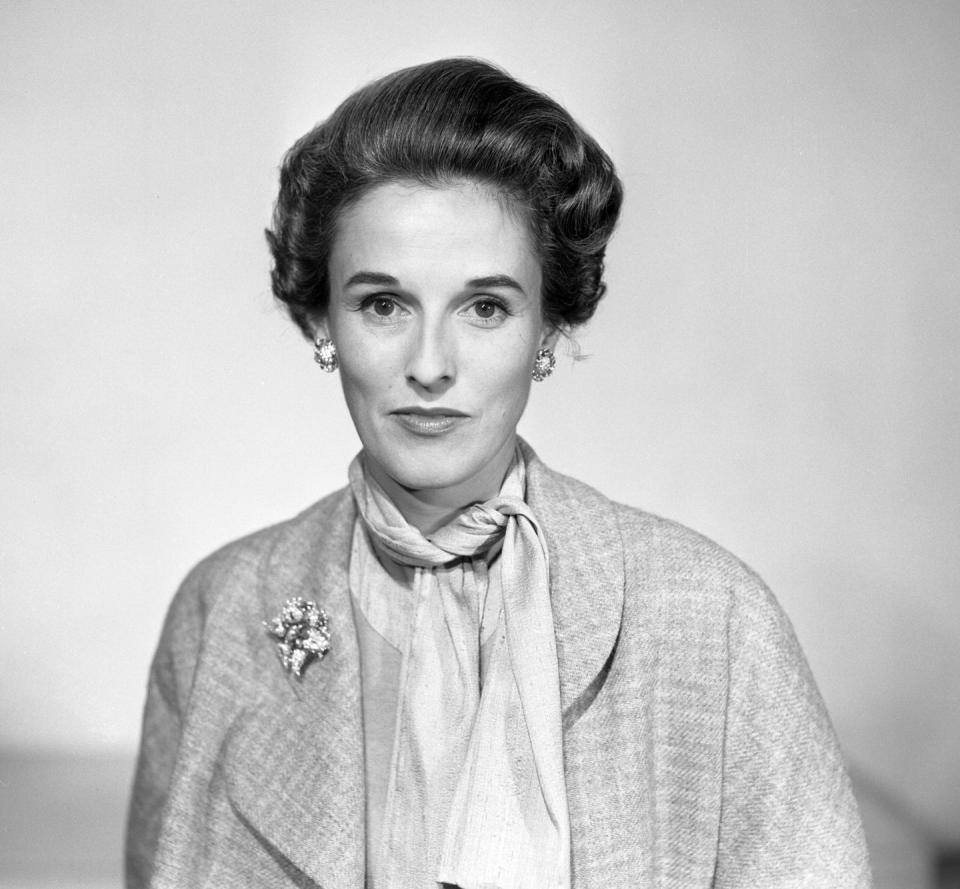
Born Barbara Cushing in Boston, Massachusetts in 1915, Babe was Capote's favorite Swan. "Babe Paley had one flaw," Capote once wrote. "She was perfect. Other than that, she was perfect." One of three sisters (whose mother's sole wish is said to have been that each of her daughters marry well; it came true), she was a fashion editor at Vogue from 1938 until 1947. Her first marriage was to Stanley Gradton Mortimer Jr.—a Standard Oil heir and descendent of the first U.S. Supreme Court Justice—in 1940 and it ended in divorce in 1946. She had two children with Mortimer, Stanley Grafton Mortimer III and Amanda Jay Mortimer. The year of that divorce, Babe met television executive William Paley and the two wed in 1947. Both offered qualities that the other desperately needed. Babe, accustomed to the finer things in life, needed security and wealth. Bill, the founder of CBS, obviously had plenty of it but he craved acceptance into the WASP-y New York society that ostracized him; Babe (portrayed on Feud by Naomi Watts) had access to that.
Babe's lasting claim to fame, however, is her unconventional style. She earned a place on the International Best Dressed List 14 times before being inducted into the Fashion Hall of Fame in 1958. While her wardrobe was lined with items by Balenciaga, Valentino, and Givenchy, her tendency was to add quirky elements, such as costume jewelry alongside her Jean Schlumberger. Once, she tied a scarf around her handbag and a tidal wave of other women emulated her.
Paley's fallout with Capote occurred when the writer published "La Côte Basque, 1965," an excerpt from his never-published novel, Answered Prayers. Babe and William Paley were alluded to in the excerpt through a character who experiences infidelity that echoed one which Babe told Capote about in confidence.
Babe Paley was diagnosed with lung cancer in 1974, and as she had lived a life in style, it appeared that she wanted to go out in that way, too. Preparing for her impending death, she planned her own funeral, including the selection of food and wine to be served at the luncheon. She wrapped her jewelry collection and personal belongings in colorful paper and created a file system with thorough instructions for distribution after her death.
Lee Radziwill
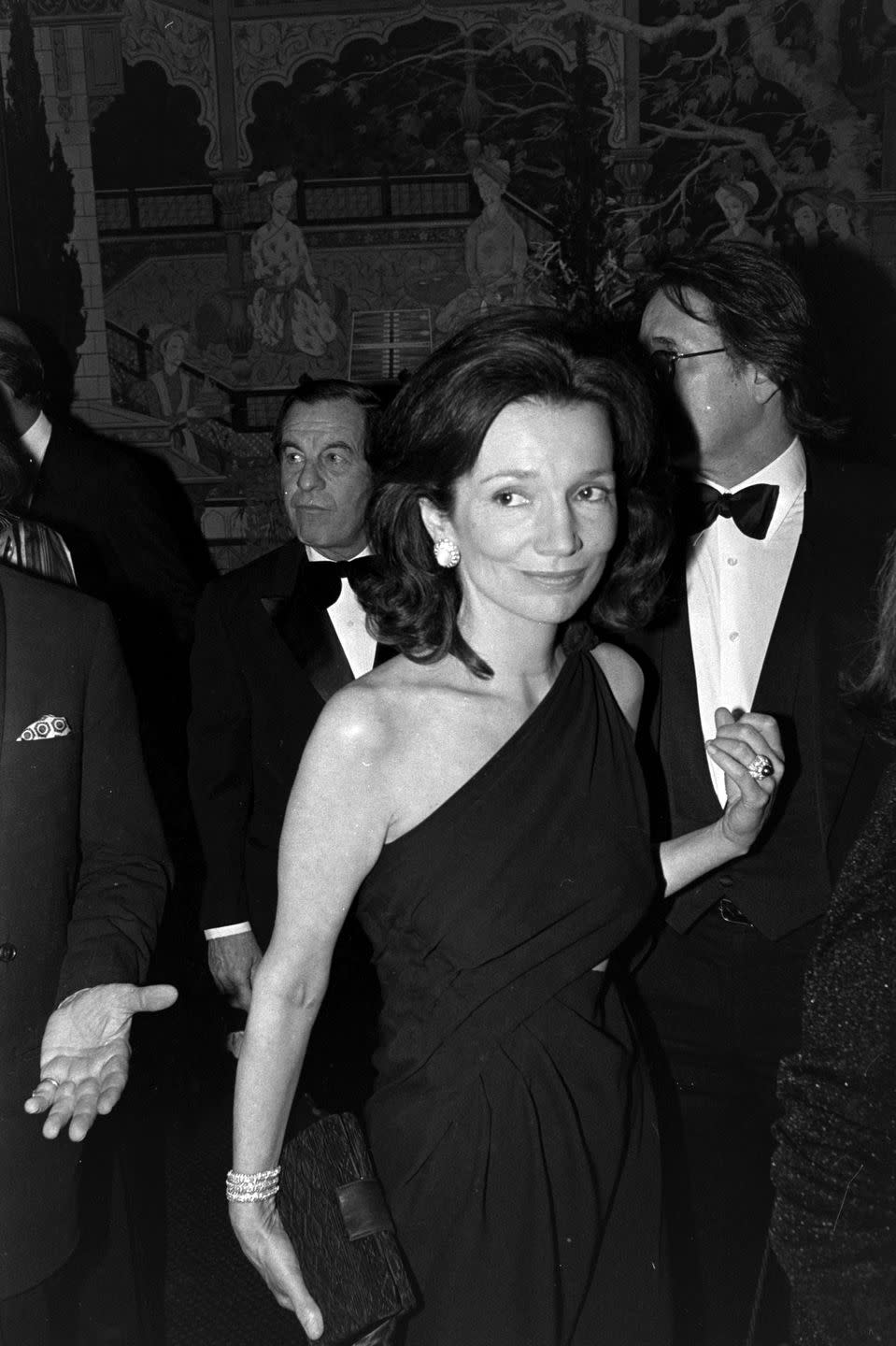
Born Caroline Lee Bouvier in 1933, Lee Radziwill (portrayed on Feud by Calista Flockhart) was an American socialite, public relations executive, princess, muse, and interior decorator. She was also the younger sister of former First Lady Jacqueline Bouvier Kennedy Onassis.
Radziwill was born into a socially established family; her father was the Wall Street broker John Vernou Bouvier III and her mother was socialite Janet Norton Lee. After her coming-out party in 1950, Life magazine ran a full photograph of her in her gown in the December 1950 issue. In the 1960s, she attempted a career as an actress, though without success. She worked briefly as an interior decorator shortly after for people who "would not be there more than three days a year." Vanity Fair named her a part of the International Best Dressed Hall of Fame in 1996. She met Capote in 1967, and he was commissioned to write the teleplay adaptation of the Otto Preminger film Laura in which she'd have a leading role. Though she wasn't a success, the two remained good friends after.
Radziwill married three times: the first was to American diplomat Michael Temple Canfield in 1953; they divorced in 1958. The second was to the Polish aristocrat Prince Stanislaw Albrecht Radziwell. After their marriage, Lee began to use the title of Her Serene Highness Princess Caroline Lee Raziwell. Lee and Michael had two children together, Anthony and Christina, but divorced in 1974. Her third and final marriage was to the director and producer Herbert Ross. They divorced in 2001, and he died later that year.
While it is without a doubt that Lee Radziwill lived in some ways in the shadow of her sister, she also had a significant influence on her own. She was a muse to some of the artistic greats: Andy Warhol, Rudolf Nureyev, Giorgio Armani, and, of course, Capote. In fact, she was even appointed as the director of special events for Armani. "I have one-of-a-kind memories of these events," Armani told T&C in 2019. "I almost had the impression I was not working, because of the understanding between us. She mastered them, lightened any tension, created a magical harmony." Radziwell died on February 15, 2019, at age 85 in her apartment in Manhattan.
Slim Keith
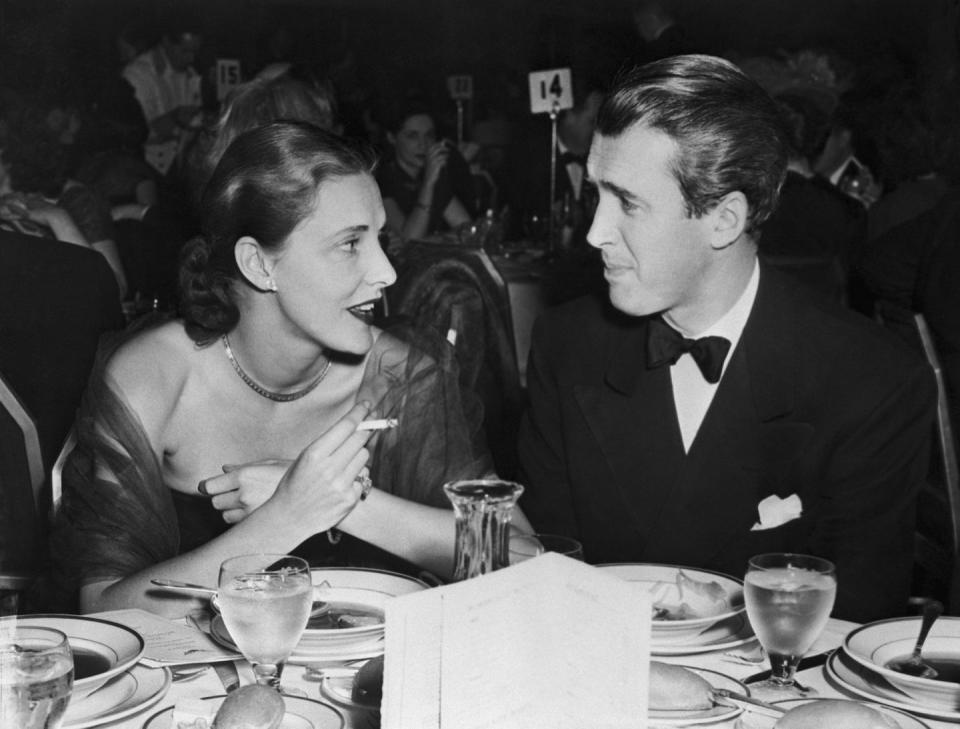
Born Mary Raye Gross in Salinas, California in 1917, Keith (portrayed on Feud by Diane Lane) was the epitome of the American jet set in the 1950s and '60s. By the age of 22, she had appeared on the cover of Harper's Bazaar and was included in the magazine's "best-dressed" list for the year. She met Capote at a dinner party hosted by Diana Vreeland in her Fifth Avenue apartment. "I was enchanted by him," Keith said about Truman, according to Capote's Women. "He wasn't just bright, he was riveting."
Keith was best known for her rebellious spirit, which made her friends like William Powell and William Randolph Hearst later in life, but didn't work so well when she was a teenager in a religious school. It's no wonder that she dropped out at age 16 to make her own way.
During her years in California, Keith reportedly enchanted the likes of Clark Gable and Ernest Hemingway. She was often accompanied to events by actors Gary Cooper and Cary Grant. In 1938, she met the director Howard Hawks who was charmed by her that he persuaded her to marry him despite already being married to actress Norma Shearer's sister. Later, his infidelity drove Keith to move away to Havana where she stayed with Hemingway after the birth of her daughter. There, she met talent agent and producer, Leland Hayward. They married and stayed together for 10 years. Her third husband was the British banker and aristocrat Kenneth Keith, Baron Keith of Castleacre.
Keith's classic "California Girl" looks commanded the attention of the public. Aside from her magazine covers and best-dressed list inclusions, in 1946, Keith won a Neiman Marcus Fashion award, which has also been won by Yves Saint Laurent and Christian Dior.
Capote and Keith's friendship ended because the fictional Lady Coolbirth in "La Côte Basque, 1965" was considered an unflattering depiction of her. They never spoke again after the story was published. Keith died at the age of 72 of lung cancer in New York.
Ann Woodward
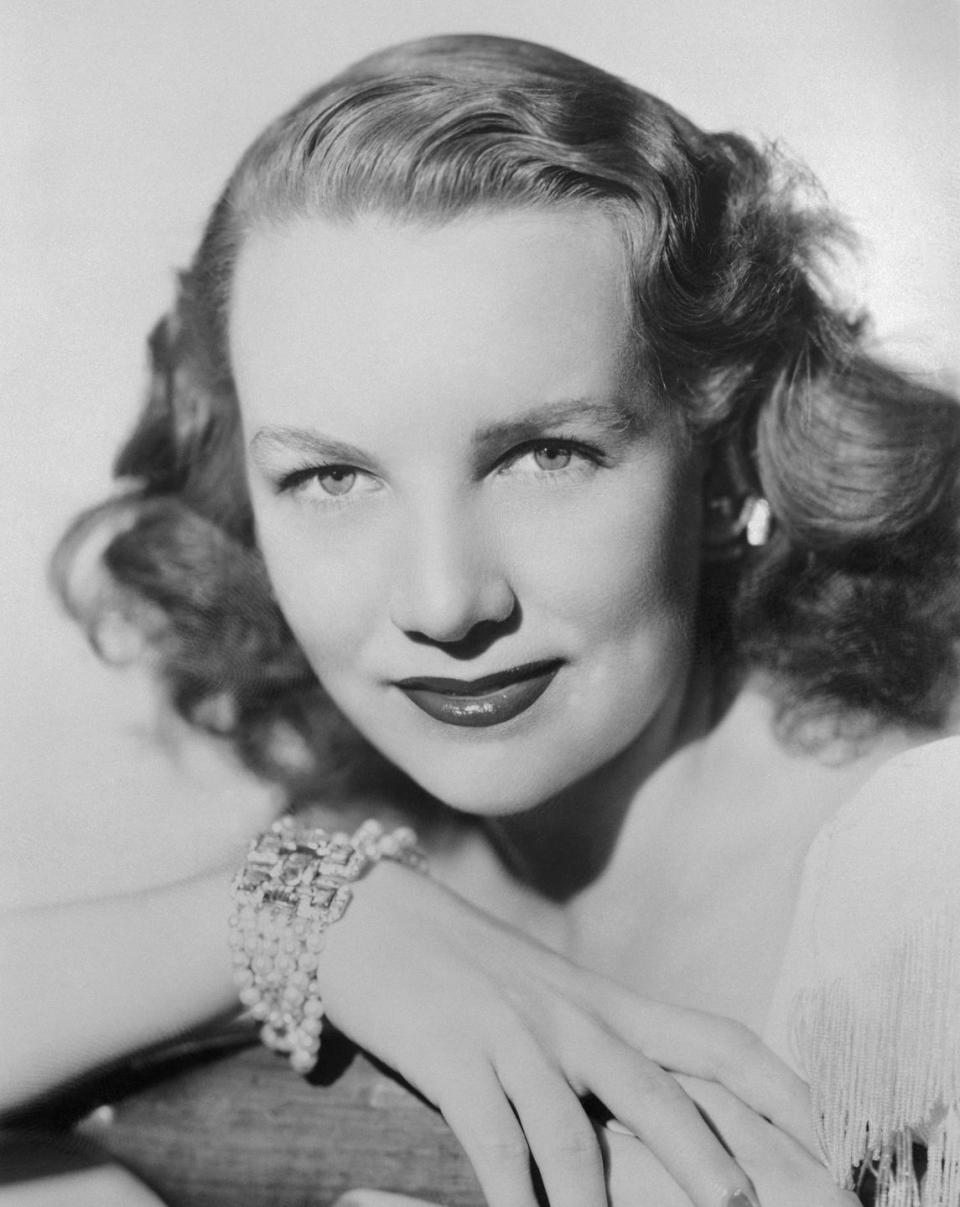
Ann Eden Woodward (portrayed on Feud by Demi Moore) was an American socialite, showgirl, radio actress, and model. Born in 1915 in Pittsburg, Kansas, she moved to New York City in 1937 to work as a model. Through Power Agency, she landed roles as a radio actress and was voted "The Most Beautiful Girl in Radio" in 1940. She met her husband, William Woodward Jr., a wealthy banker from an old-money family, while working at a nightclub in New York City. "Ann Eden, dancing onstage, was mesmerizing to him—charismatic and unrestrained, whether dancing provocatively on the stage or circulating among the customers in her little bunny suit," wrote Roseanne Montillo, author of Deliberate Cruelty wrote. The two wed in 1943, but it was not met with open arms: Woodward was initially shunned from New York high society because of her background, and William's mother always thought of Ann as a stain on the family's legacy.
Woodward's legacy is indeed a troubled one. Her marriage with William was unhappy, despite having two sons together. In 1955, there was a string of burglaries in the couple's neighborhood in Oyster Bay, Long Island. After attending a party hosted by Florence Tucker Baker in honor of the Duke and Duchess of Windsor, Ann fired a shotgun twice in her home, mistaking her husband for a burglar and killing him. She was found not guilty, although Life considered it "The Shooting of the Century." After the shooting, Woodward tried to keep a low profile, but met Capote at a dinner a year later in St. Moritz and formed a tenuous friednship. Despite her efforts—or any belief that befriending Capote would protect her—the events were revisited in "La Côte Basque, 1965."
Woodward died by suicide on October 10, 1975, in her apartment on Fifth Avenue. "She shot my son, and Truman just murdered her, and so now I suppose we don't have to worry about that anymore," her mother-in-law reportedly said in regards to her death.
Gloria Guinness
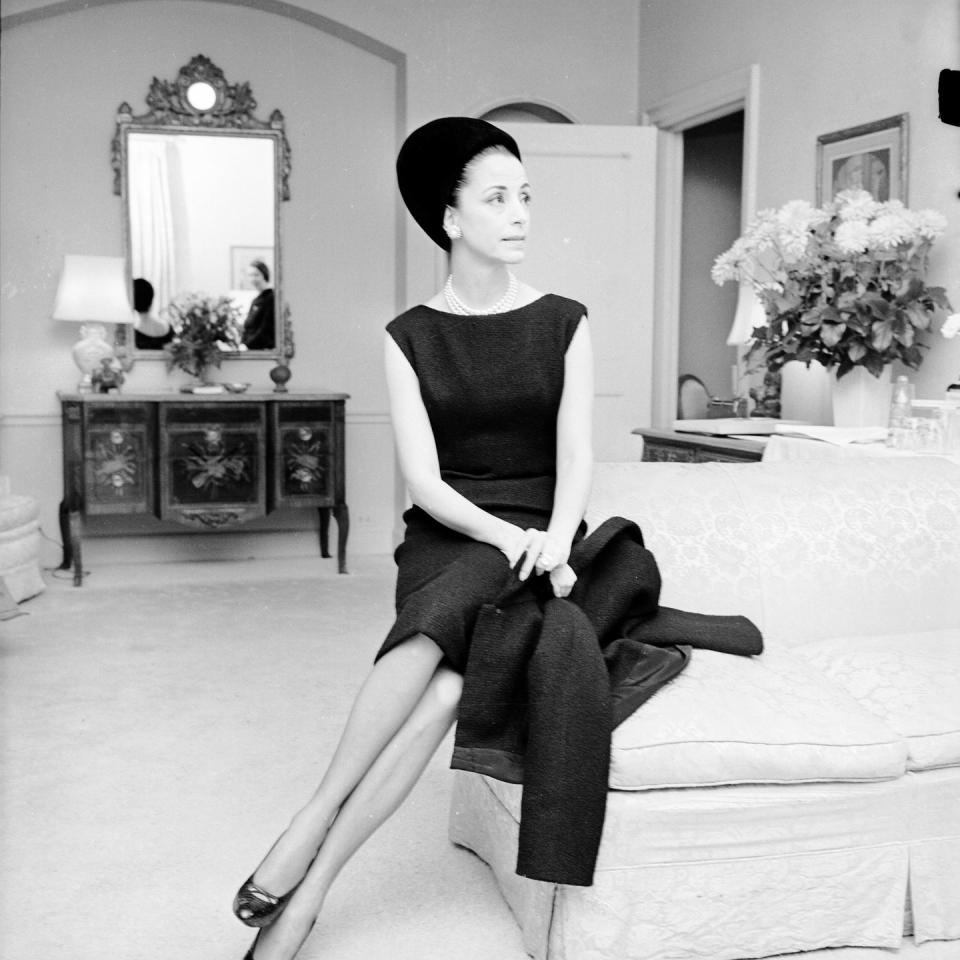
Born Gloria Rubio y Alatorre in Guadalajara, Mexico in 1912, Gloria Guinness was a Mexican socialite and fashion insider. American publicist Eleanor Lambert once called her "the most elegant woman in the world," and her wardrobe—which consisted of designs by Cristobal Balenciaga, Elsa Schiaparelli, Chanel, and Halston—backed up the claim. Guinness met Capote in the 1950s, and he often accompanied her to parties or trips on her yacht. What made her amusing to Capote, according to Leamer, is "...for the most part, the ultra-rich have literal minds, and they find excessive wit dangerous, even subversive. That was a lesson Gloria never cared to heed." There are rumors that she may have been a spy during World War II, which would fit with that documented taste for danger.
Guinness's background isn't entirely clear, and her Mexican birth was hidden and debated by those around her throughout her life. Despite attempts to mask her origins, here's what we know: Her father was a liberal journalist and her mother was from a Spanish colonial landowning family from Jalisco. Guinness's childhood was unstable due to her father's political persecution during the Mexican Revolution, and his death when she was five. During the Cistero War in Jaliso, Guinness and her relatives had to leave the countryside of Mexico City.
But Guinness turned strife into gold. Capote once said, "There are certain women, and a few men too, who, though perhaps not rich, are born to be rich." That was Guinness. After their exile, she married Jacobus Hendrik Franciscus Scholtens, a Dutch superintendent of a sugar factory in Veracruz. He had money and status, and it was her first step out of a difficult past. After they divorced, she left for Paris. She married Franz-Egon Maria Meinhard Engelbert Pius Aloysius Kaspar Ferdinand Dietrich, third Graf von Fürstenberg-Herdringen. Her third marriage was to Ahmad-Abu-El-Foutouh Fakhry Bey, the grandson of King Faud I of Egypt, and her final marriage was to Thomas Loel Guinness. As far as kids, Leamer wrote that her family tree "looked like a bramble bush."
Guinness was a style icon and muse to an array of notable names. She was pained by René Bouché, photographed by Richard Avedon, and dressed by Elsa Schiaparelli. While capri pants may not be en vogue among today's fashionable crowd, Guinness catapulted the garment into fame in her day, being one of the first high-profile names to wear capris by Emilio Pucci. She was on the International Best Dressed list from 1959 through 1963 and was inducted into its Hall of Fame a year after.
She died in 1980 of a heart attack at Villa Zanroc in Epalinges. Though she is not portrayed in Feud: Capote vs. The Swans, she does pop up in "La Côte Basque, 1965."
Marella Agnelli
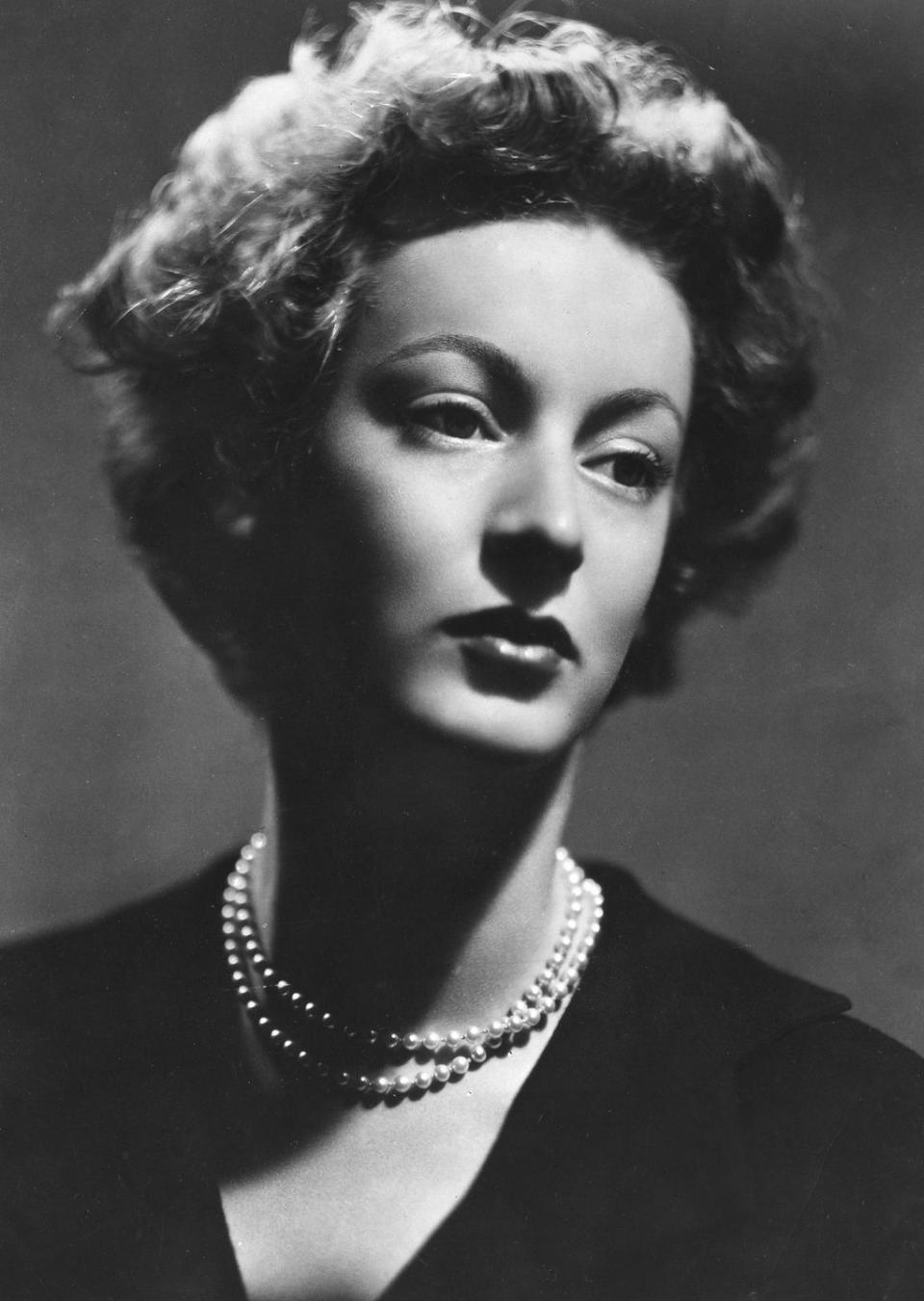
Born Donna Marella Caracciolo di Castagneto in 1927, Marella Agnelli was an Italian noblewoman, art collector, and socialite who met Truman Capote in the late 5190s. Before they met, she had already read Truman's first two books and, according to Leamer, agreed that he was "a young genius."
Even before she married Gianni Agnelli, the chairman of Fiat (which is ironic, because it's noted that he's a horrible driver ) in November 1953, Agnelli had the kind of wealth and pedigree that felt plucked from a fairytale. She comes from an aristocratic bunch; her father was Filippo Caracciolo, who was part of a Neapolitan noble family, and her mother was a wealthy Anglo-American. Agnelli was highly educated, having studied art and design at the Académie des Beaux-Arts and Académie Julian in Paris.
She put her creative interests to the test by embarking on several grand projects, including purchasing and resorting a dilapidated villa in Marrakesh, and spending decades working with garden designer Russell Page to perfect her family's 25 acres at Villar Persoa in Turin.
Similar to other Swans on this list, Angelli's beauty captivated several artistic greats, including Andy Warhol and Richard Avedon, and she was one of Valentino Garavani's most beloved customers. She was inducted into the International Best Dressed Hall of Fame List in 1963.
While she isn't included in Murphy's series, her fallout with Capote was mentioned in the memoir Becoming an Agnelli. "During the 1960s, I regarded Truman as one of my closest friends, perhaps the closest," she wrote. "... But he was waiting like a falcon."
Marella Agnelli died on February 23, 2019, in her home in Turin, Italy at the age of 91.
Pamela Harriman
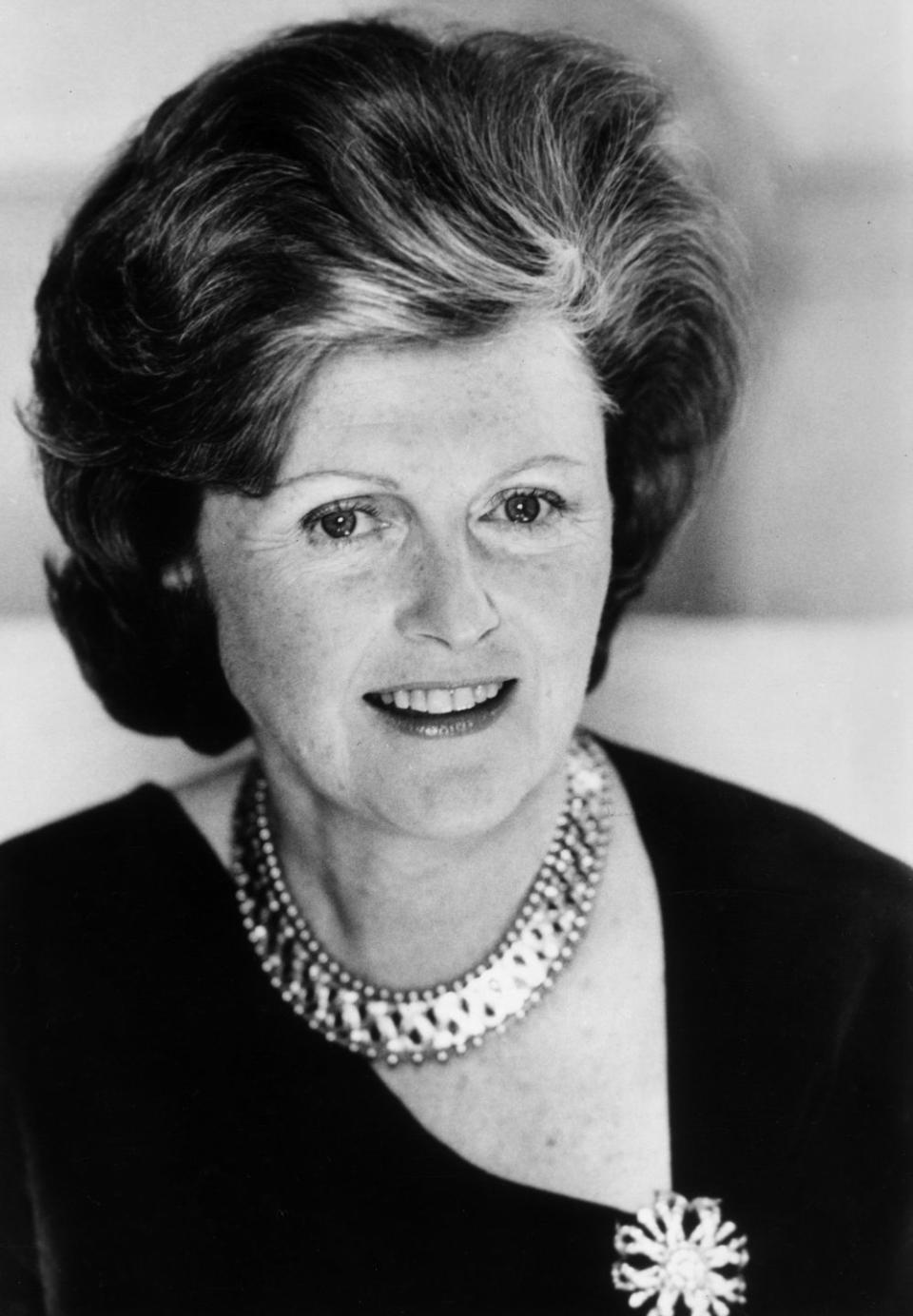
Pamela Beryl Harriman was an English-born American socialite and diplomat. Born June 30, 1993, in England, Harriman was birthed into an old aristocratic family; her father was Edward Digby, 11th Baron Digby, and his wife, Constance Pamela Alice, was the daughter of Henry Campbell Bruce, 2nd Baron Aberdare.
While not considered to be the most beautiful nor elegant of the Swans, Harriman may have been the most charming. Truman Capote called her a "geisha girl" for rich and important men—and in some ways she was. She married three times: Her first husband was Randolph Churchill, the son of the prime minister Winston Churchill. They were married in 1939, and the pairing catapulted her into the international social scene. After their divorce in 1946, Harriman had access to other men of the upper crust: Prince Aly Khan, Alfonso de Portago, Gianni Agnelli, and Baron Elie de Rothschild were among her suitors.
Her second marriage created a rift among the Swans. In 1959, she met producer Leland Hayward while he was still married to Slim Keith. Hayward and Harriman married in Carson City, Nevada on May 4, 1960. When Hayward died in 1971, Harriman wasn't interested in being a lonely widow. That next day, she resumed her relationship with Harriman, and the two wed later that year.
As far as career accomplishments go, her charm proved to be an asset. She became heavily involved with the American Democratic Party by creating a fundraising system named "Democrats for the 80s," and was eventually appointed as the U.S. Ambassador to France by President Clinton in 1993. Harriman died on February 5th, 1997, after suffering a brain hemorrhage while swimming in the Ritz Paris pool.
You Might Also Like

